Dental Implants
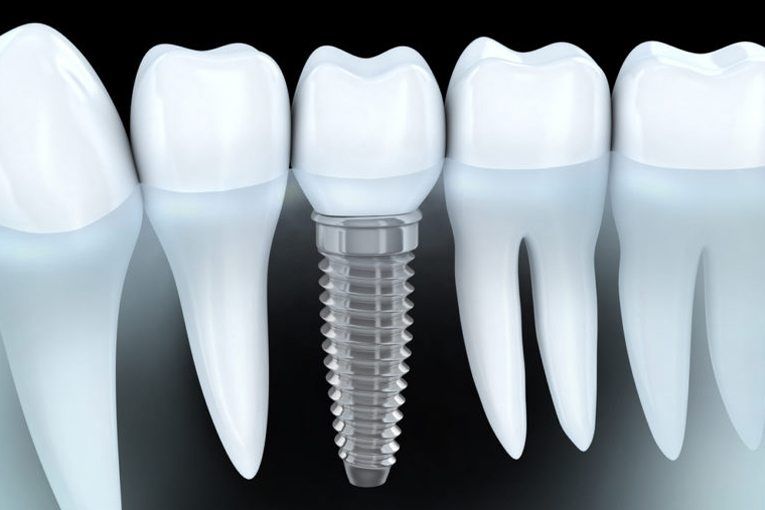
Single Implant
Middletown, New Jersey Dental Implants
Dental implants are now a standard of care in tooth replacement. It is Pinehurst Dental Arts mission to use dental implants as a way to transform the aesthetics and function of her patient’s who feel handicapped by their missing teeth. Our dental implant patients feel confident and secure in their new smile.
Our dental implant patients are able to function with their new teeth the same way they would if it were their natural teeth. Implants use artificial titanium roots that are placed in the area of a missing tooth or teeth. The titanium implant then has a porcelain crown or bridge placed on top, which functions as a natural tooth. They are easy to clean and have the potential to last a lifetime. Implants not only replace missing teeth, but they also prevent the drift of adjacent teeth into the open space, a condition that can greatly affect the appearance and function of the entire mouth. Implant therapy is a predictable, reliable treatment for tooth replacement.
Dental Implant Placement Process
The first phase of dental implant therapy is the placement of the artificial root. In some cases, bone grafting may be performed to support the structure of the jaw and tooth. After the implant is placed, the area is allowed to heal and reform bone around the new artificial root. Once this has occurred, a porcelain crown is placed on top of the implant.
Schedule a Consultation Today
Pinehurst Dental Arts offers dental implant consultations in our Middletown, New Jersey family dental office. Our interactive patient education program explains the entire process, and our doctors visit with each patient to discuss the implant options that are most appropriate for their individual needs. Call our office today to schedule your consultation appointment.
Implants vs. Bridges
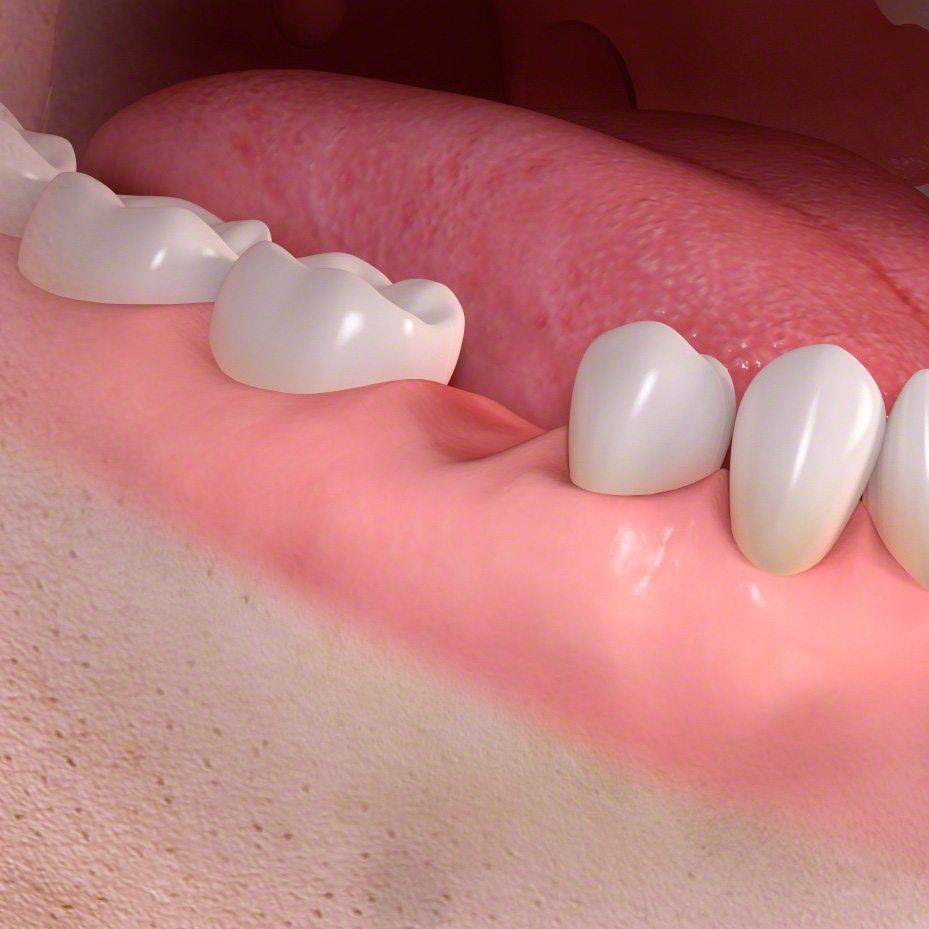
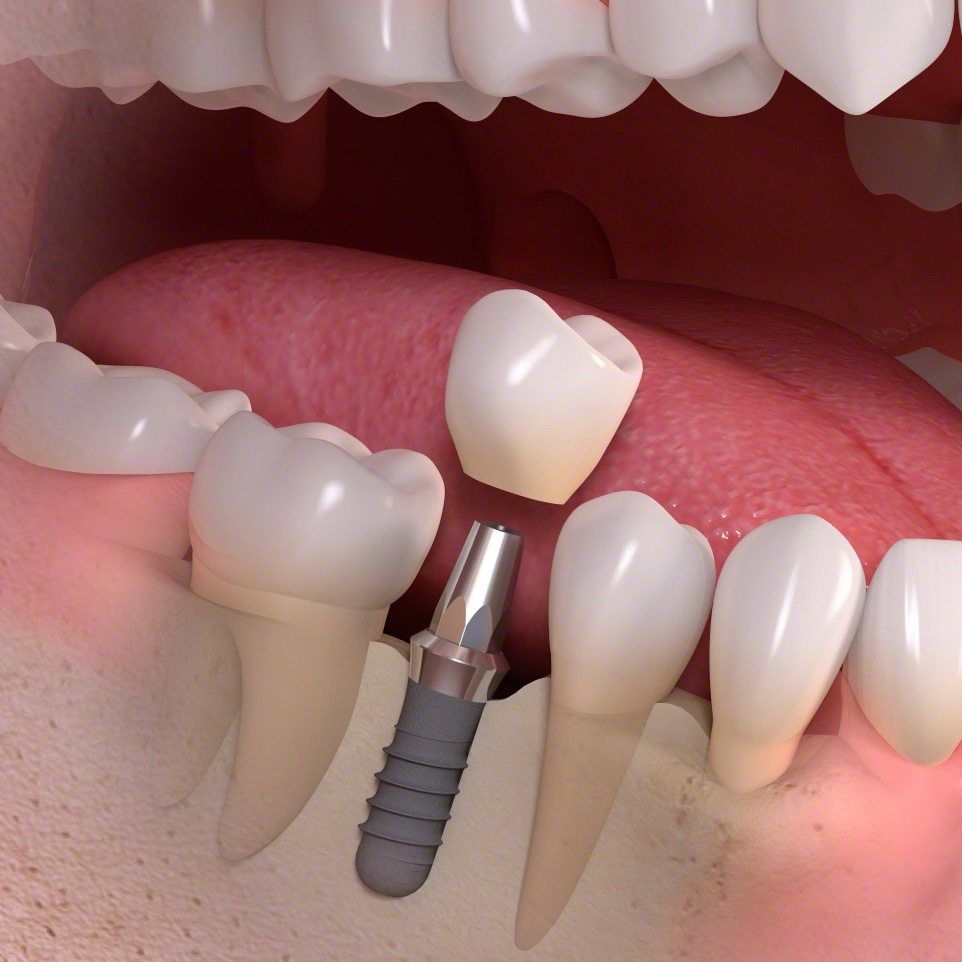
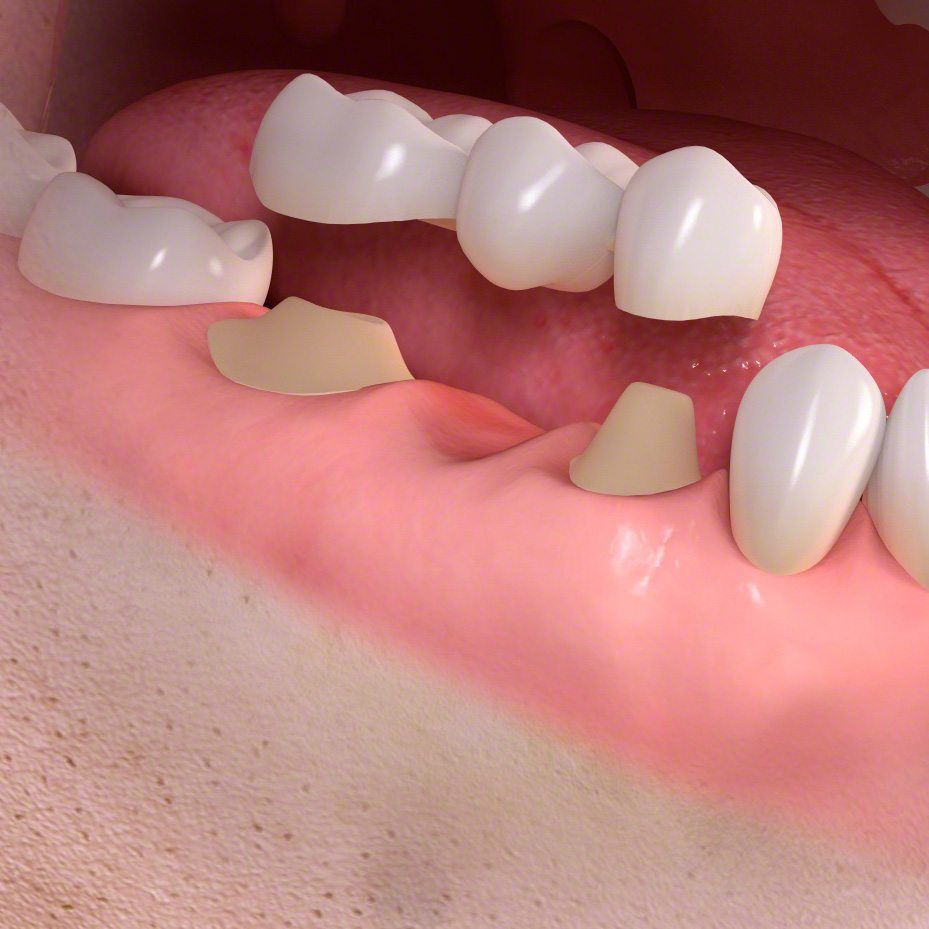
What’s the difference between a dental bridge vs. implant?
Implant supported bridges are a blend between single tooth implants and bridges. Implants are individual teeth surgically placed within the jaw. A bridge is comprised of crowns that are fused together and anchored in place – usually by surrounding abutment teeth. An implant specialist may recommend an implant supported bridge in lieu of individual implant crowns if there are multiple teeth missing in succession and there is concern that tooth grinding or clenching could put too much pressure on individual teeth. When an implant supported bridge is used, individual implants are still used to replace each individual tooth; but the crowns are fused together for equitable distribution of bite pressure.
While most implant supported bridges are anchored in place by dedicated implants, some are instead anchored by individual implant supported crowns that serve as abutment teeth. In other words, individual teeth are replaced with implants and crowned, and those new prosthetic teeth are used as abutments for a traditional bridge. This type of implant supported bridge is often used when there is only a fractional areas of the gum line.
Frequently Asked Questions
Am I a candidate for an implant supported bridge?
You may be a candidate for an implant supported bridge if you have more than one tooth missing or if you are prone to clenching or grinding that could loosen individual implants. You’ll need a consultation with your oral provider to determine whether you have sufficient jawbone density beneath your gums to support implants. If supported bridge facilitated via bone grafting.
What should I expect if I decide to get an implant supported bridge?
If you decide to get an implant supported bridge, a titanium implant will be surgically placed beneath your gums and into the area of your jawbone that your tooth root once occupied. You’ll probably experience some discomfort and swelling following the procedure. Expect to follow a soft-foods diet for at least 10 to 14 days after your surgery. Implants are left in place to fuse with the jawbone for a period of 6 to 9 months. After that time, you’ll return to your implant specialist to be fitted for a bridge and any additional crowns you may require.
Will I need to follow any special instructions to care for my new bridge?
Your implant supported bridge will require little care outside of routine brushing and cleaning. However, your dentist will advise you to take time to clean the area between your gums and bridge using a specialty floss or small brush. Be sure to continue to attend periodic dental cleaning and examination appointments.
Which treatment option is right for me?
Dentures vs Overdentures
Which treatment option is right for me?
Fixed Restoration
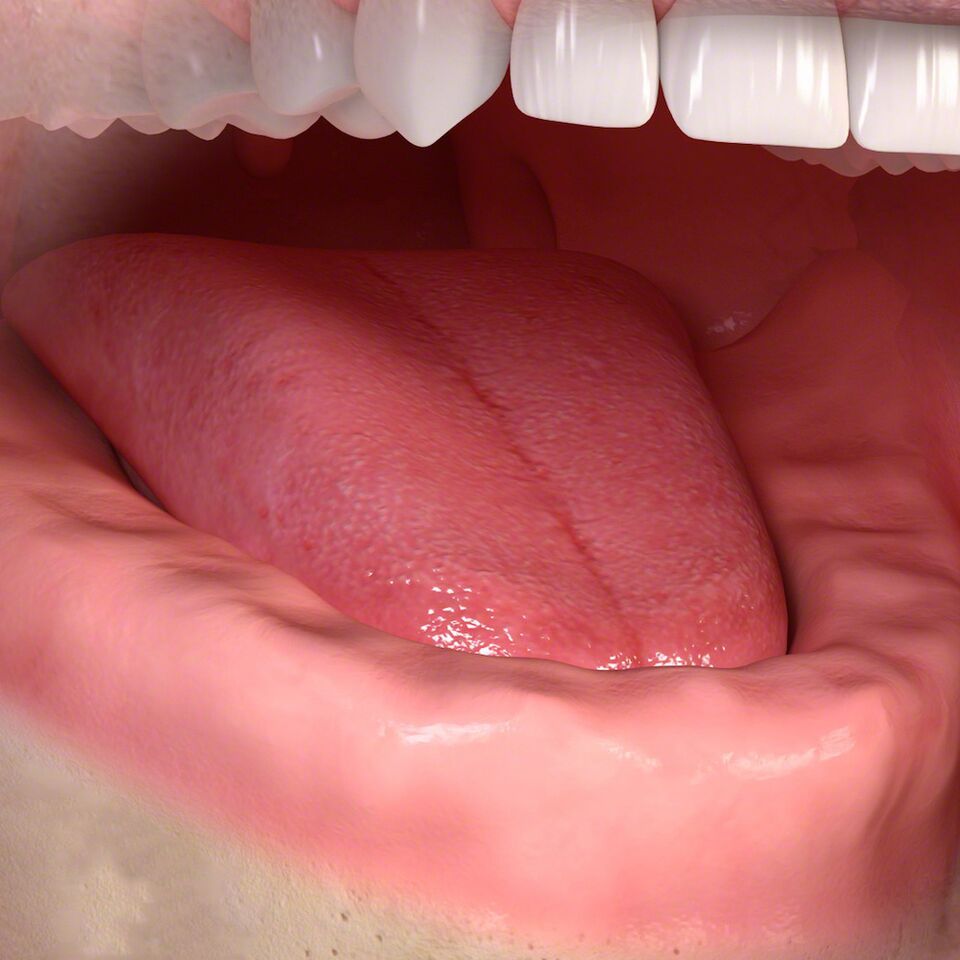
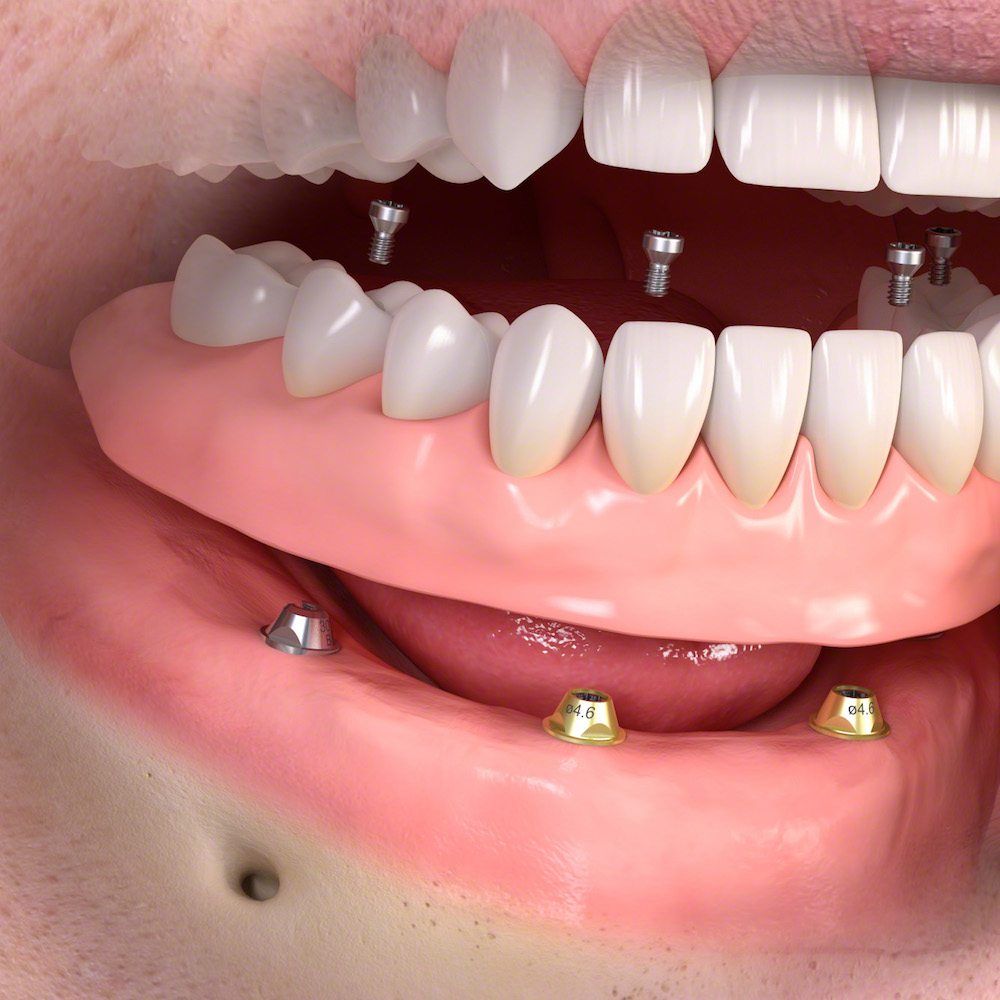
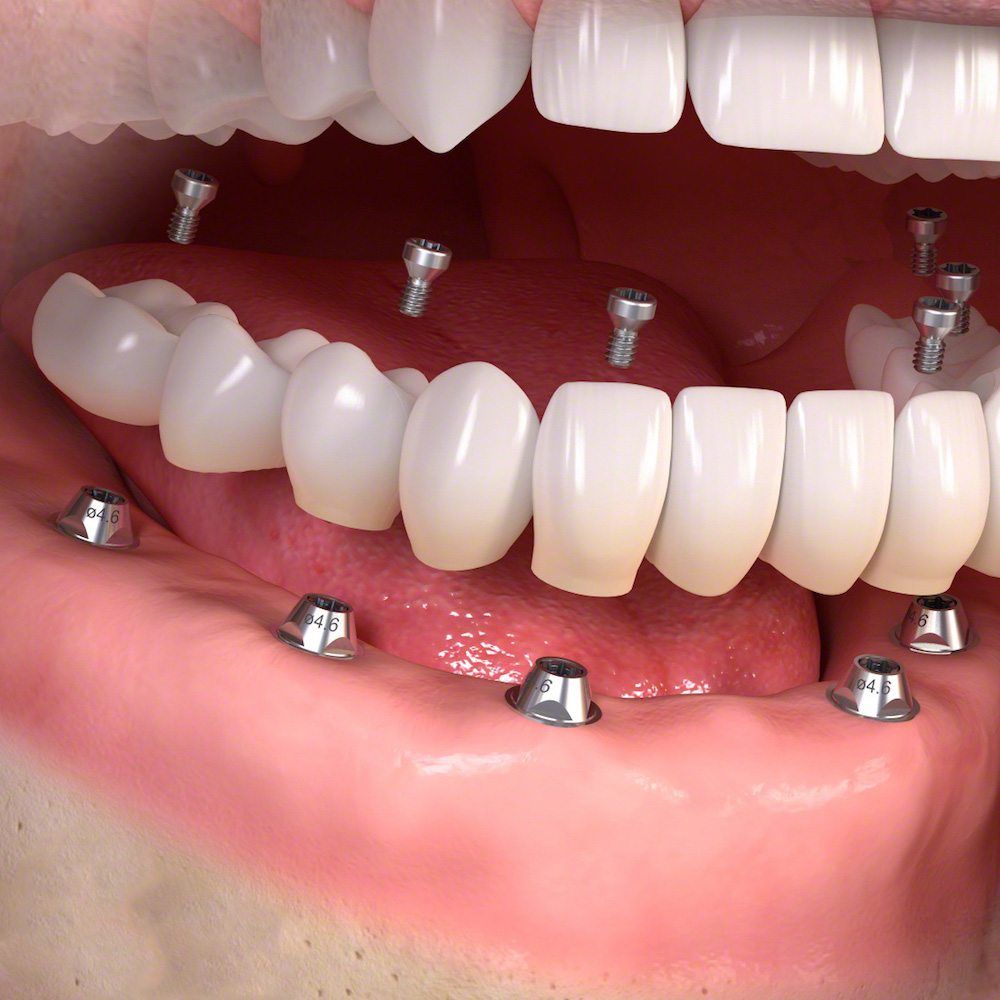
For decades, dentures have been the go-to solution for missing tooth replacement. These dental prosthetics are carefully crafted for a shape and appearance that is unique to each patient. As technology has improved, dentures have been made to look more natural than ever – often undetectable to other people. But despite their versatility and effectiveness, one feature has been problematic for denture wearers: the fit. Even though dentures are designed to fit snugly over the gum line, the bone beneath it inevitably deteriorates over time. This causes dentures to slip, slide and even come out when talking or chewing.
Fortunately, the use of dental implants has changed the way people wear dentures, making them more secure and easier to wear than ever before. Dental implants are titanium rods placed within the jaw bone in place of a natural tooth root. The bone fuses to the implant, forming an anchor for tooth prosthetics, such as dentures. When patients choose implant retained dentures, they get the flexibility of a denture with the permanence of an implant.
Did you know…
that 30 million people in America are currently missing all of their teeth – either in their upper jaw, lower jaw, or both? Many of these people are candidates for complete implant retained dentures. But partial dentures are common too. In fact, 178 million people in the U.S. are missing at least one tooth, qualifying most for an implant retained crown.
Frequently Asked Questions
Am I a candidate for implant retained dentures ?
Implant retained dentures are a solution for many, but not all patients. If you are missing one or more teeth, contact our office to schedule a consultation. To qualify for dental implants, you must have adequate bone structure to support the implant.
How long does it take to get an implant retained denture?
Because dental implants and dentures are custom-made to fit each patient, it can take several weeks or months before the process is complete. After an initial consultation, an appointment will be made to remove any teeth than need to be replaced and begin inserting implants into the jaw. A mold will be taken of the newly fitted implants, which a dental lab will use to fabricate dentures for the patient. If there are any natural teeth remaining, the dentures will be created to mimic their shape, size and color.
I don’t have enough bone to support an implant retained denture. What options are available to me?
If the jaw bone that once supported your missing teeth has already eroded, you may still be able to qualify for dental implants by undergoing a bone grafting procedure. During this treatment, the jaw bone is built up to sustain an implant. For more information about implant retained dentures and whether they are right for you, contact our office.

